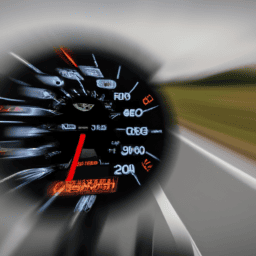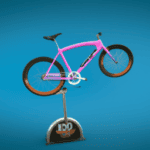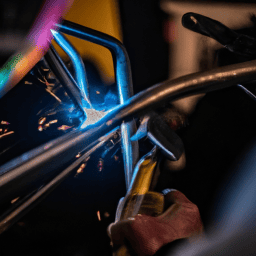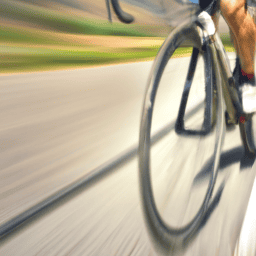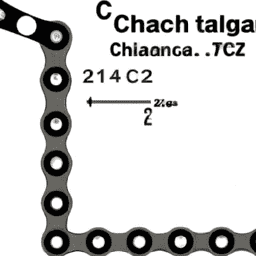As someone who is both a seasoned cyclist and passionate about biking, I frequently get asked, ‘what’s the average speed of a bicycle?’
The answer, of course, varies depending on a range of factors, including the type of bike, the terrain, and the rider’s fitness level.
In this article, I’ll break down the average speeds of different types of bikes and discuss the various factors that affect bike speed.
When it comes to cycling, speed is a crucial element. Whether you’re a competitive racer or a casual rider, knowing how fast you can go on a bike is essential for setting realistic goals and tracking your progress.
By understanding the average speeds of different types of bikes and the factors that affect speed, you can tailor your training and equipment choices to maximize your performance and achieve your cycling goals.
So, let’s dive in and explore the fascinating world of bike speed!
Key Takeaways
- The average speed of a bike depends on factors such as the type of bike, terrain, rider’s fitness level, wind resistance, and terrain gradient.
- Road bikes have an average speed of 15-20 mph on flat terrain with favorable weather conditions, while mountain bikes are heavier and slower on rough terrain.
- Hybrid bikes combine the speed and efficiency of a road bike with the comfort and stability of a mountain bike, and their average speed depends on the rider’s skill level and terrain.
- Uphill climbs and rough terrain can slow down bike speed, while efficient pedaling techniques and comfort and stability are important factors to consider for improving cycling skills.
Factors That Affect Bike Speed
Want to know what factors affect how fast your bike goes? Let’s dive in and find out!
One of the most significant factors is wind resistance. When you ride your bike, the wind creates resistance, which slows you down. The faster you go, the greater the wind resistance. That’s why cyclists wear tight-fitting clothing, such as aerodynamic helmets and skin suits, to reduce wind resistance and ride faster.
Another factor that affects bike speed is terrain gradient. When you ride uphill, you’ll naturally slow down because you have to work against gravity. On the other hand, when you’re going downhill, gravity helps you pick up speed. The steeper the hill, the slower you’ll go uphill and the faster you’ll go downhill.
These two factors, wind resistance and terrain gradient, significantly affect how fast you can ride your bike on any given day. Now, let’s move on to the average speed of a road bike.
Average Speed of a Road Bike
The velocity at which a road bike typically travels is influenced by a variety of factors, such as the terrain, weather conditions, and the cyclist’s physical abilities. The aerodynamic design of a road bike allows for faster speeds on paved surfaces, but can also make it more difficult to maneuver in certain situations.
Cycling techniques, such as drafting and maintaining a steady cadence, can also impact a cyclist’s speed. Moreover, training strategies that focus on improving endurance and strength can result in increased speed and distance.
When it comes to the average speed of a road bike, it can vary greatly depending on the aforementioned factors. However, experienced cyclists can typically maintain an average speed of 15-20 mph on flat terrain and with favorable weather conditions. Of course, this speed can increase or decrease based on the terrain and other factors.
Now, let’s take a look at the average speed of a mountain bike.
Average Speed of a Mountain Bike
If you’re riding a mountain bike, you’ll likely be navigating through trail terrain that can be rough, rocky, and unstable. These conditions can significantly affect your overall speed, especially when climbing steep inclines. The weight of your bike is also a factor that affects your speed.
Mountain bikes are heavier than road bikes, which makes them more difficult to accelerate and maintain speed on flat surfaces. To improve your average speed on a mountain bike, it’s important to focus on training techniques that build endurance, strength, and agility.
You can start by incorporating interval training into your workouts, which involves alternating between high-intensity bursts of pedaling and recovery periods. This will help you build up your cardiovascular endurance and improve your ability to pedal faster and more efficiently. Additionally, practicing technical skills such as cornering, braking, and shifting will help you navigate through trail terrain with greater speed and control.
As you transition into learning about the average speed of a hybrid bike, it’s important to keep in mind that the factors affecting speed are different in this type of bike.
Average Speed of a Hybrid Bike
When you’re riding a hybrid bike, it’s like having the best of both worlds – the speed and efficiency of a road bike and the comfort and stability of a mountain bike. The average speed of a hybrid bike depends on various factors such as the rider’s skill level, the terrain being ridden on, and the efficient pedaling techniques used.
On flat roads with no wind resistance, a hybrid bike can easily maintain an average speed of 15-20 mph. However, terrain impact plays a significant role in determining the average speed of a hybrid bike. Uphill climbs and rough terrains can slow down the speed considerably. In such cases, using efficient pedaling techniques such as maintaining a steady cadence and shifting gears appropriately can help maintain a consistent speed.
It’s important to remember that the average speed of a hybrid bike is not the only factor that determines the quality of a ride. Comfort and stability are equally crucial. As you set realistic goals for your cycling journey, remember to prioritize these factors alongside speed.
Setting Realistic Goals for Your Cycling Journey
Ready to start your cycling journey and achieve your goals? Let’s talk about setting realistic targets for yourself.
It’s easy to get caught up in the excitement of cycling and set unrealistic goals that can lead to disappointment and burnout. To avoid this, here are three tips to help you set achievable targets:
-
Start small and build up gradually: It’s important to set goals that challenge you, but not so much that they become overwhelming. Begin with short rides and gradually increase your distance and speed. This will help you build endurance and improve your cycling skills.
-
Track your progress: Keep a record of your rides, including distance, speed, and time. This will allow you to see your improvement over time and keep you motivated to continue cycling.
-
Stay motivated: Set rewards for achieving your goals, such as buying new cycling gear or treating yourself to a massage. Surround yourself with supportive people who encourage and motivate you to keep cycling and reaching your targets.
Remember, the most important thing is to enjoy the journey and have fun!
Frequently Asked Questions
What is the maximum speed a professional cyclist can achieve on a road bike?
As a professional cyclist, I can achieve a maximum speed of around 45-50 mph on a road bike. This is made possible through rigorous training techniques and gear optimization, allowing for efficient power transfer and aerodynamics.
How does wind speed affect the speed of a bicycle?
When cycling, wind speed affects the rider’s speed. Proper cycling technique and an aerodynamic position can help reduce the impact of headwinds, while tailwinds can increase speed. However, crosswinds can be challenging to manage and may reduce speed.
What is the difference in average speed between a beginner cyclist and an experienced cyclist?
The difference in average speed between a beginner cyclist and an experienced cyclist can vary greatly. Training techniques and equipment upgrades can significantly improve speed and endurance. Consistent practice and a focus on proper form are also key factors in improving performance.
Does the weight of a cyclist affect the speed of a bicycle?
As a cyclist, I have observed that my weight impacts the speed of my bicycle. The heavier I am, the slower I go. However, the gear ratio of my bicycle can also affect my speed, especially when going uphill.
How do different road surfaces, such as gravel or pavement, affect bike speed?
As I ride my bike on various surfaces, I notice differences in the amount of resistance from my bike tires. A friction analysis shows that gravel provides more resistance than pavement, causing a decrease in speed.
Conclusion
In conclusion, the speed at which a bicycle travels depends on various factors, including the type of bike, terrain, weather, and the rider’s fitness level.
A road bike is designed for speed and can reach an average speed of 15-20 mph, while a mountain bike’s average speed is between 6-12 mph. Hybrid bikes fall in between, with an average speed of 12-15 mph.
It’s essential to set realistic goals for your cycling journey, taking into account your fitness level and the type of bike you ride. Pushing yourself too hard can lead to burnout and injury, while taking it slow and steady can help you build endurance and improve your overall cycling performance.
Remember, cycling isn’t just about speed; it’s about enjoying the journey and taking in the scenery. So, get on your bike, set your goals, and enjoy the ride!
